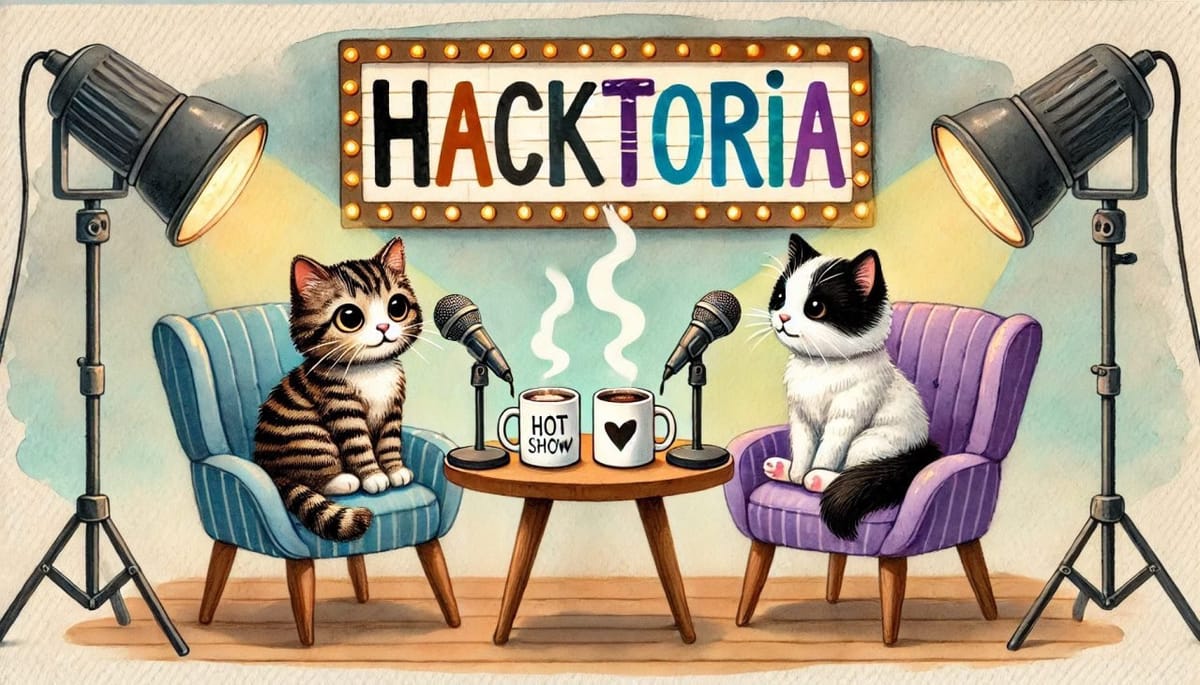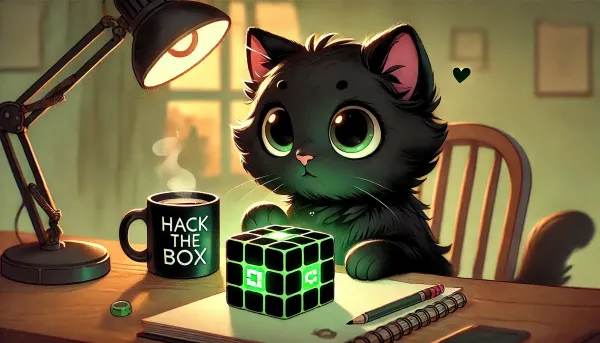Inside Hacktoria: How Frank Diepmaat is reinventing OSINT with Story-Driven CTFs
Step into the world of Hacktoria, where OSINT meets spy thrillers. It's founder, Frank Diepmaat, shares how storytelling, community, and creativity are reshaping cybersecurity training.

When most people think of cybersecurity training, they imagine sterile labs, static challenges, and endless checklists. But Frank Diepmaat, founder of Hacktoria, had a different vision: what if OSINT learning felt like a spy thriller — full of storylines, cryptic clues, and immersive worldbuilding?
Hacktoria was born out of Frank’s unusual intersection of careers. “I worked in IT for about 12 years, from sysadmin to cybersecurity. But on the side, I ran an online magazine and publishing platform. Fiction was always part of my life,” he shared during our interview. “One day I thought — what if I could combine storytelling and tech into one project?”

That idea became Hacktoria: a community-driven, story-focused OSINT platform where players dive into interactive investigations. Each challenge — or "contract," as they’re called — unfolds like an episode in a thriller. And according to Frank, that storytelling twist is what makes Hacktoria different.
“It makes the player feel like a special agent,” he said, “and it gives me a cool hobby to combine tech and stories.”
Fiction meets Function
While the storytelling is immersive, the technical OSINT skills behind each CTF are real. Frank and the team often draw inspiration from fiction, games, and real-world events to spark ideas. One of Hacktoria’s earliest and most beloved challenges even used real photos from my travels in Argentina, stitched into a fake Instagram profile to obscure clues from reverse image searches.
Frank explained me their process: sometimes the team starts with a story and builds a technical challenge around it. Other times, they reverse it — starting with a specific OSINT technique and then crafting a narrative to match.
“It’s either story-first or technique-first, but both work,” he said. “We always aim for fun first, and the technical layer comes naturally.”
Accessible, Immersive, and Ever-Evolving
One of Hacktoria’s biggest strengths is its accessibility. Challenges are downloadable without a login, making it easy for anyone to jump in. “We wanted it to be welcoming,” Frank said. “No gatekeeping. Just download a challenge and go.”
Each contract also comes with an ingredients list — a clear breakdown of skills required — so players know what they’re diving into. The platform doesn’t stop there. Hacktoria’s Discord server is its living, breathing heart. Complete a challenge, earn a collectible card, and drop it into the bragging channel. You'll earn XP, coins, and access to digital gear — like safe houses and spy gadgets — all part of Hacktoria’s growing narrative universe.
“It’s a mix of a CTF, an RPG, and a community sandbox,” Frank explained.
The 24/7 community challenges are another unique innovation. Players create, solve, and iterate on OSINT puzzles continuously — with over 1,000 user-generated contracts created to date. The result is a thriving, collaborative learning loop.

A safe space for Social Learners
In a world where cybersecurity communities can lean competitive or even toxic, Hacktoria is consciously different. “We ban trolls immediately,” Frank said bluntly. But more importantly, the platform is built for social learners — people who thrive by collaborating, asking questions, and growing together.
“Most tech communities are built for solo learners — self-taught folks who prefer figuring things out on their own,” Frank said. “But not everyone learns that way. We wanted to make space for people who learn best through others.”
That intention is reflected in Hacktoria’s culture. Ask a question on Discord, and you're more likely to get a thoughtful answer than a dismissive meme. The community self-corrects, supports, and often surprises the creators with their initiative. “Sometimes users create entire storylines for their own community-made challenges,” Frank said. “One even recorded an audio file to set the mood.”
The philosophy behind OSINT learning
Frank's advice to OSINT newcomers is refreshingly grounded: don’t start with flashy tools. “Learn the process first,” he said. “If you don’t know what a tool does, you shouldn’t click it. Especially not on someone else’s website.”
His perspective on learning extends beyond the technical. One of the most vital skills in OSINT, he argues, is self-awareness — the ability to spot and challenge your own biases. “It’s hard, but essential,” he said. “Otherwise, you’ll just find the answers you want to see.”
He recounted a personal moment from his first marketing job, where user research revealed a harsh truth: the product had no real use case. “I had every reason to believe it was great — my job depended on it. But the evidence said otherwise.” That experience shaped his approach to research and investigations.
Tools from the unexpected places
A surprising insight from our conversation? Some of the best OSINT tools aren’t designed for OSINT at all. “Marketing and sales tools blow most open-source OSINT tools out of the water,” Frank said. Platforms like Apollo or Clay, built to find contact data for outbound marketing, are incredibly powerful for investigators.
And that’s just the beginning. “Brand monitoring tools that do sentiment analysis across the web — they’re gold for journalists or anyone tracking narrative trends”, he said.
AI, truth, and the future of OSINT
Frank is quick to acknowledge the potential of AI, but he's even quicker to issue a warning. “The tools to find answers are getting better — but so are the tools to fake them.”
While AI-powered geolocation tools or text summarizers can accelerate research, Frank emphasized the need for foundational skills. “You still have to know how to verify. Otherwise, you're just copying what an algorithm spit out.”
“AI is just another tool,” he said. “A powerful one — but if people stop learning, we stop innovating. And AI stops getting smarter, because it learns from us.”
Whether he’s building conspiratorial websites filled with mining aliens or fine-tuning challenge mechanics for a more balanced experience, Frank Diepmaat remains committed to making OSINT training not just educational — but thrilling.
And if you’re wondering what’s next for Hacktoria: He hints at deeper worldbuilding, horror-themed murder hotel challenges, and conspiracy plots ready to unfold.
"We’re putting out fewer challenges, but they go deeper. More storytelling. More mystery. More fun."
For Frank and the Hacktoria community, the game is always on. And the mission? To make learning OSINT feel like you just stepped into your favorite spy movie.
As we wrapped up our conversation, it was clear Frank’s world is one built on curiosity, collaboration, and creativity — with plenty of caffeine and conspiracy along the way. In the second part of our interview, we’ll peel back the curtain on Hacktoria’s behind-the-scenes moments, wild player stories, and the hilarious (and sometimes chaotic) realities of running a story-driven CTF platform.
Interested? Then continue reading Coming Soon: Part 2 — Behind the Scenes with Frank from Hacktoria: Coffee, Cartels, and Conspiracy Theories.




